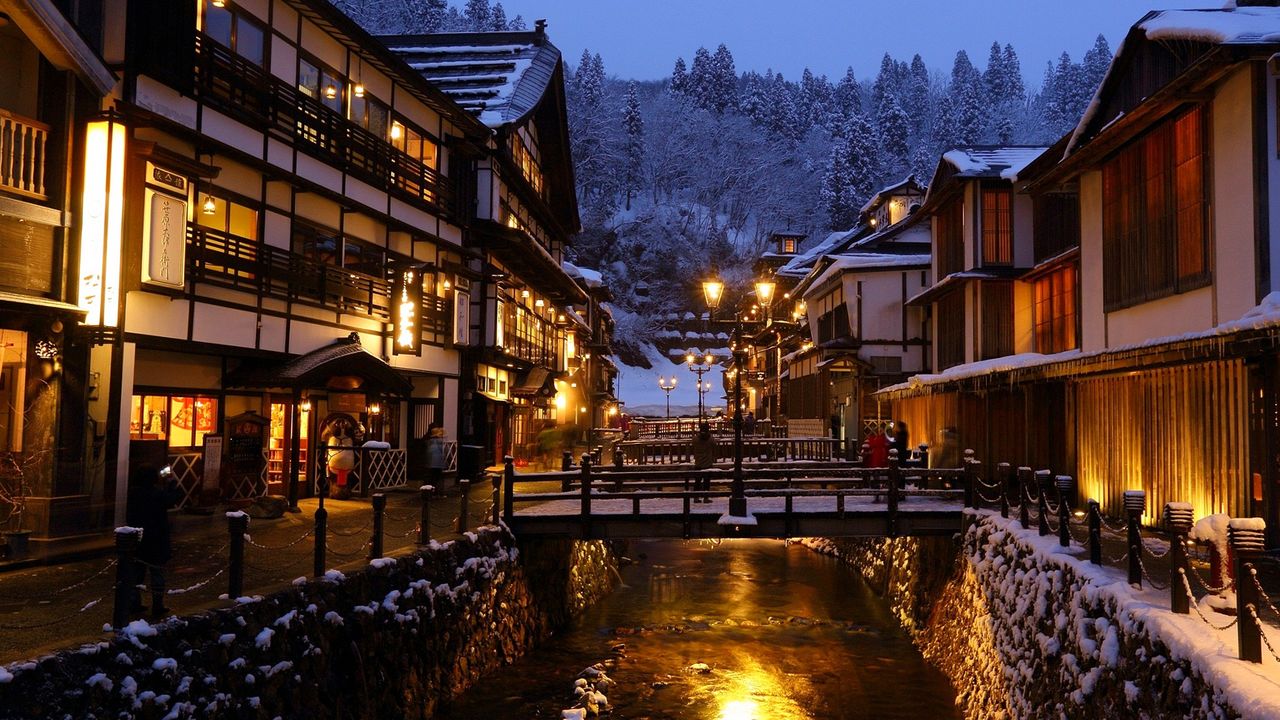
Soaking in History at Ginzan Hot Springs
Guideto Japan
Travel Culture- English
- 日本語
- 简体字
- 繁體字
- Français
- Español
- العربية
- Русский
Ryokan-Lined Riverbanks
Miners working the old Nobezawa silver mine first discovered the thermal water of Ginzan Hot Springs some 500 years ago. The site flourished during the mine’s heyday in the early seventeenth century, but eventually declined as silver production waned. The hot springs enjoyed a resurgence starting in the Taishō era (1912–1926), though, with multistory wooden ryokan springing up along the banks of the Ginzan River.
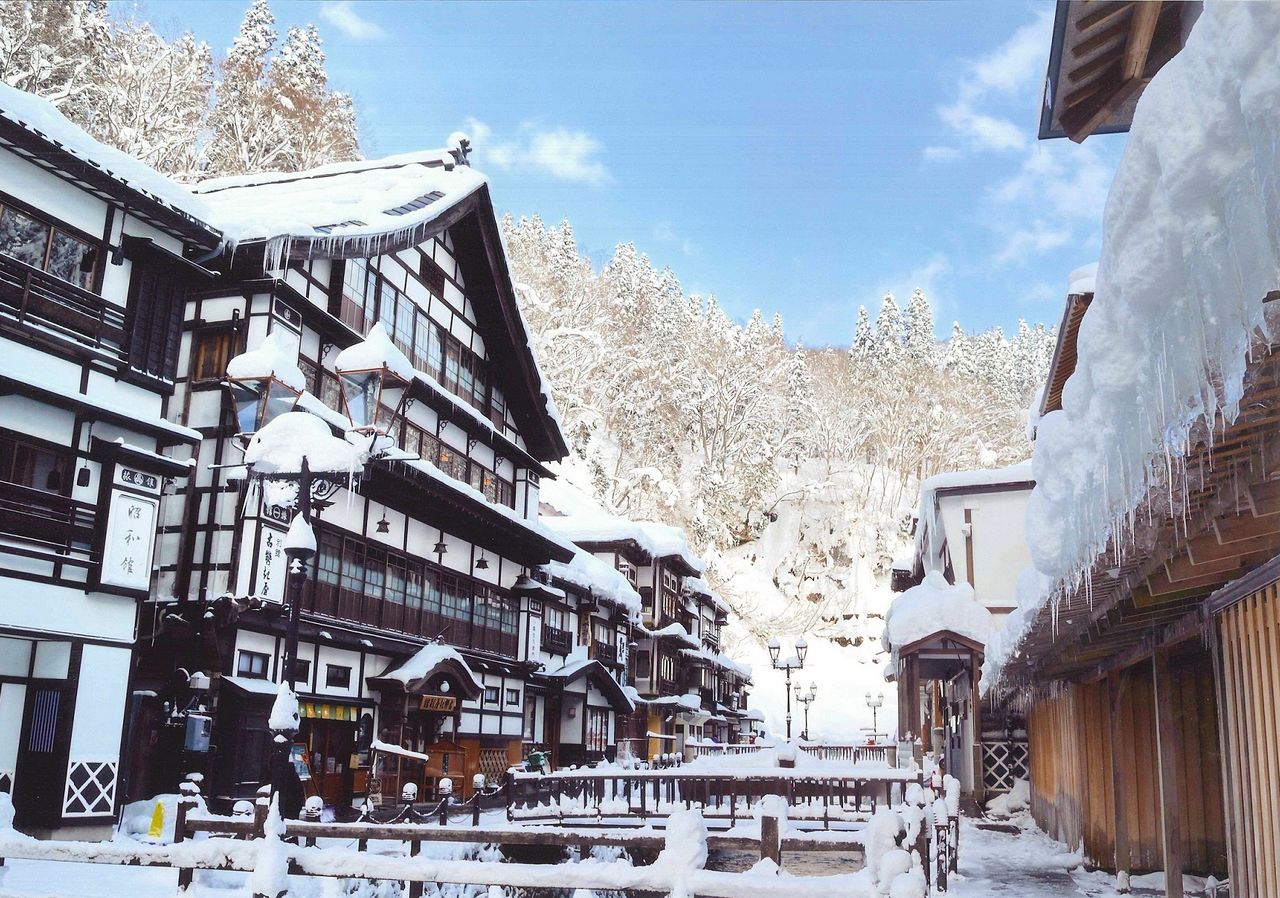
Snow blankets ryokan along the Ginzan River. (© Obanazawa Chamber of Commerce)
Cobblestones and Gaslights
Ginzan Hot Springs draws visitor to its thermal waters and old-fashioned charm. Guests can immerse themselves in the historic atmosphere by renting a kimono to stroll the cobblestone lanes, adorned with eye-catching tiles, and admire the traditional wooden ryokan along the river.
Around sunset gaslights at bridges spanning the Ginzan River are lit, bathing the town in warm light. The scene is particularly moving during the winter months, when the soft glow of the lamps warmly illuminate the snow-covered resort.
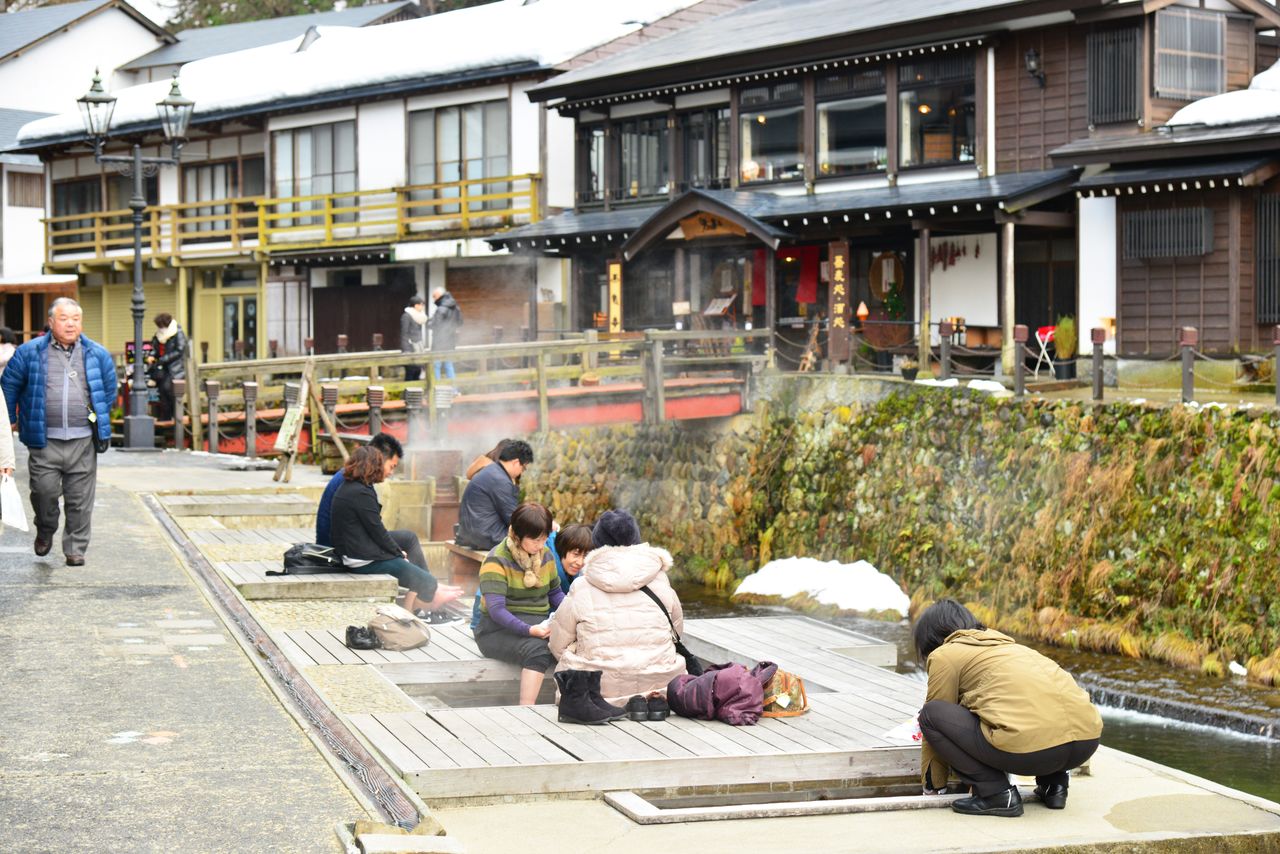
Passers-by dip their feet in footbaths. (© Shoe Press)
Notoya Ryokan
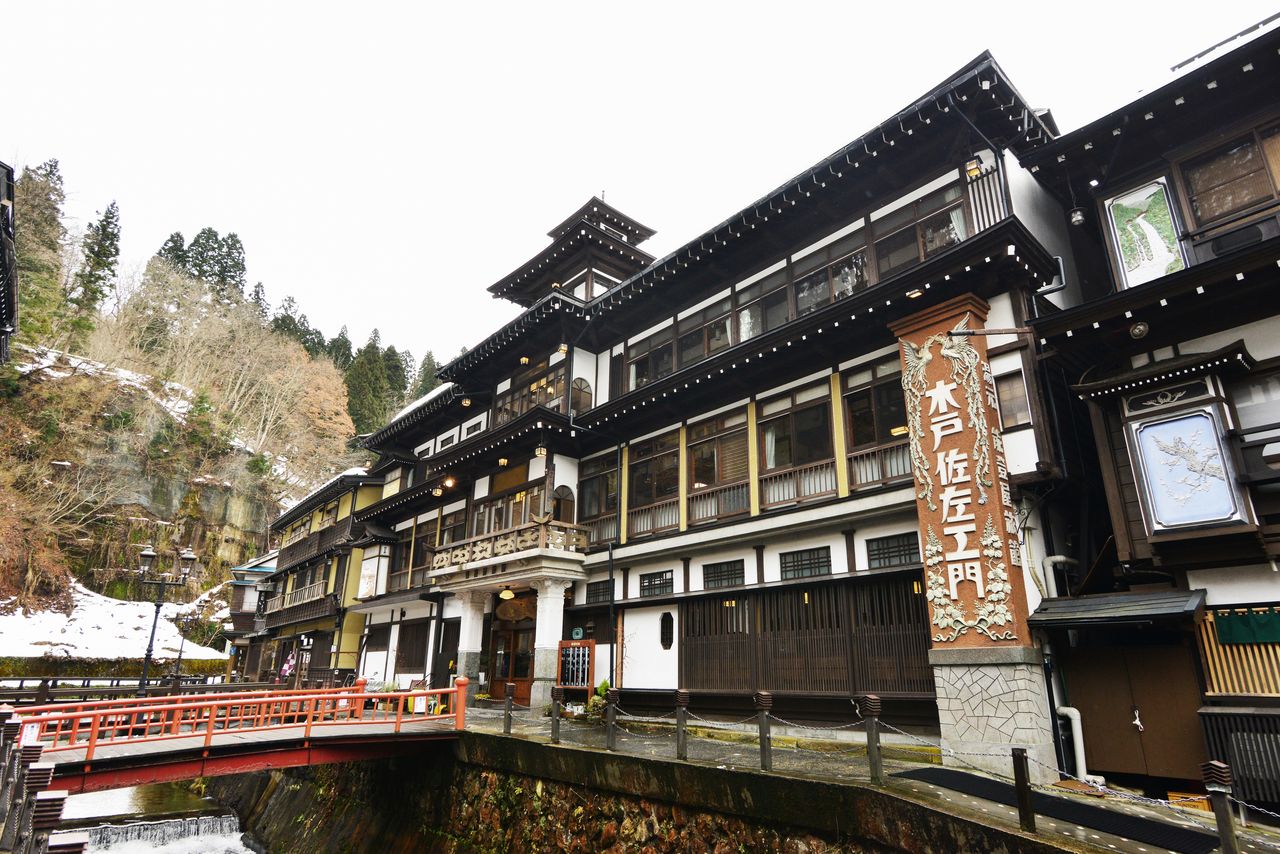
Exterior: A column outside the ryokan bears the name of Kido Sazaemon, discoverer of the silver mine, in kote-e relief. (© Shoe Press)
The centerpiece of Ginzan Hot Springs is the four-story Notoya Ryokan. Established in 1892, the current structure was built in 1921 and is designated a National Tangible Cultural Asset.
The building’s distinct architecture includes countless detailed plaster engravings called kote-e on columns and box-like compartments for storing rain shutters. The traditional works also adorn other structures around the resort, lending the town an artistic air.
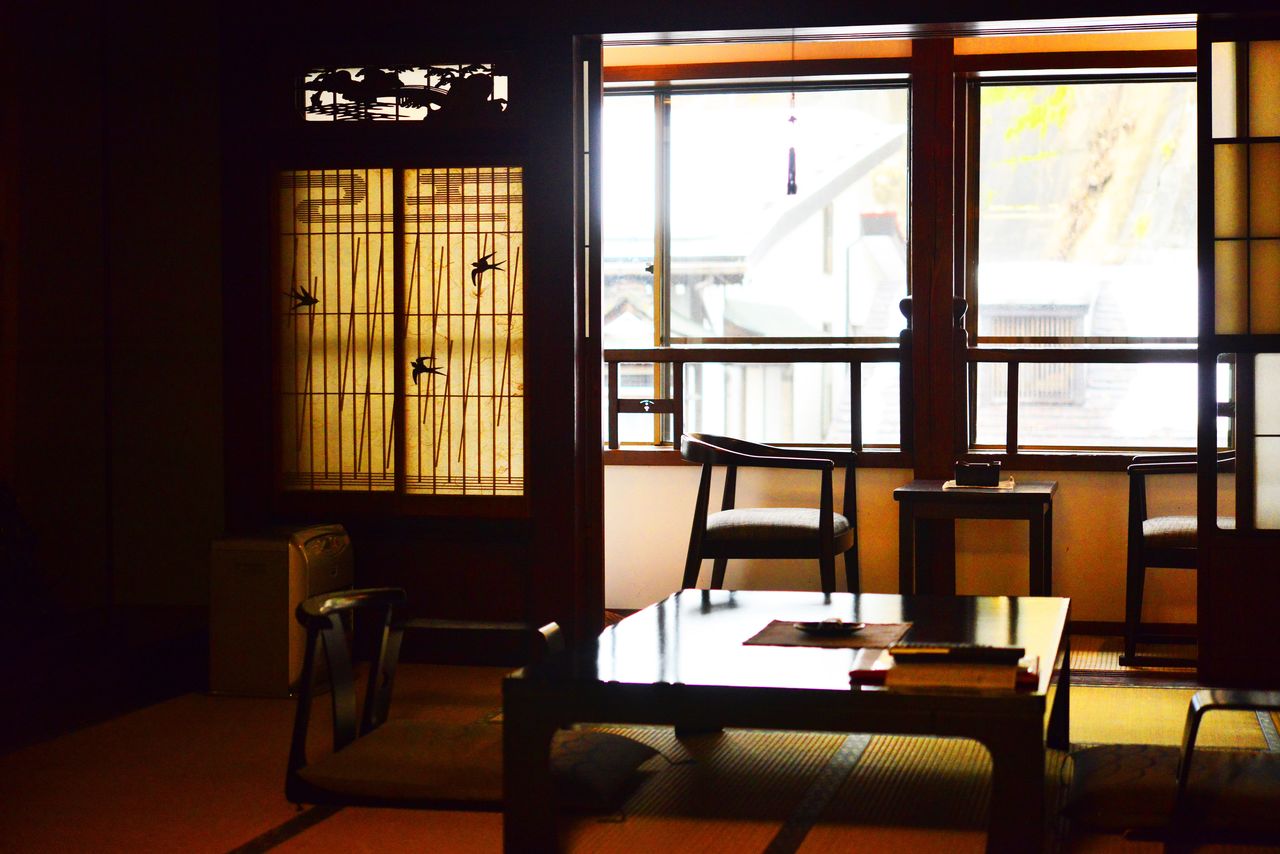
Interior: A Japanese-style room at the Notoya Ryokan. (© Shoe Press)
Inside, the wood construction of the ryokan creates a warm atmosphere that is enhanced by its hallway floorboards and staircase handrails that have been polished to an amber hue by countless hands of feet. Guests can stay in rooms in the main building, which retains its Taishō-era feel, or the more modern annex. Both buildings have spacious Japanese-style rooms where guests can pass the time in an air of elegance.
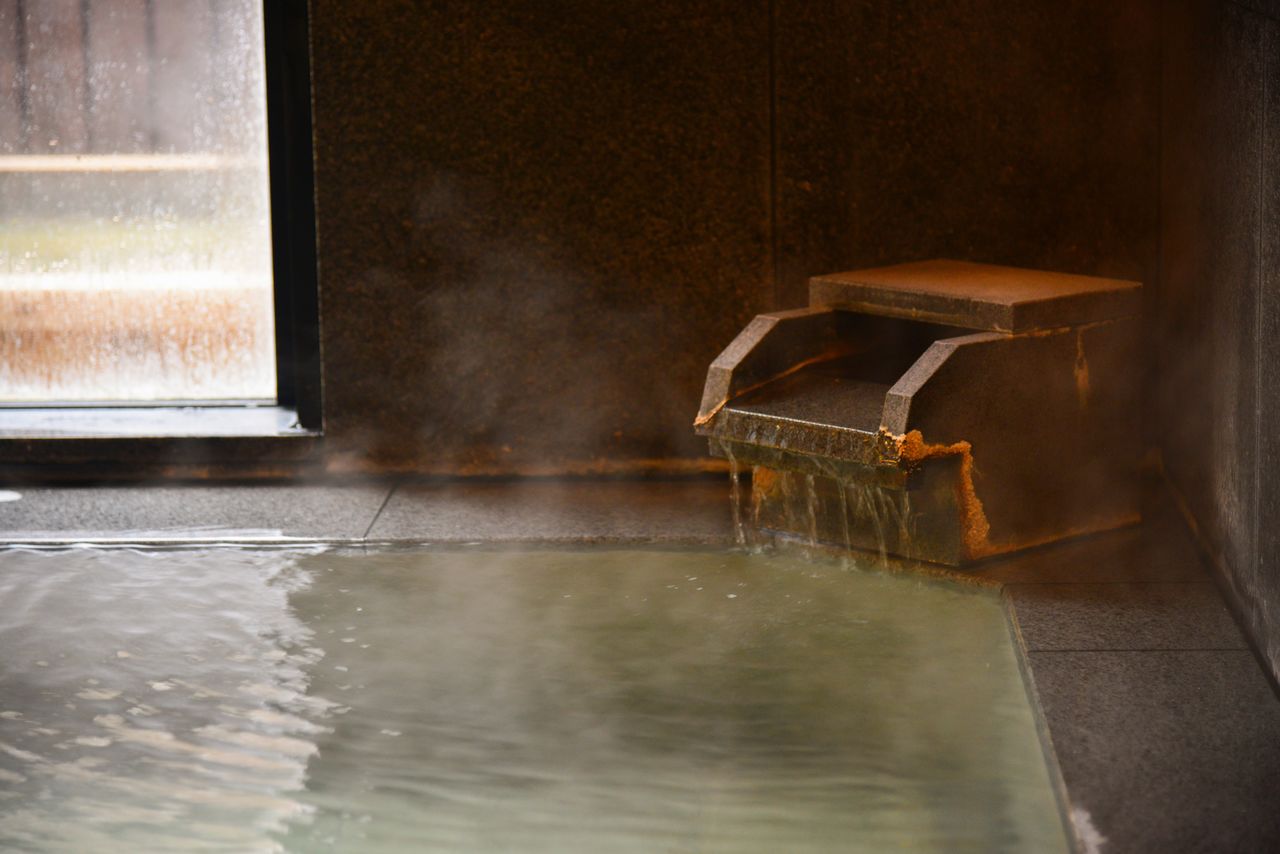
Steam rises off the ryokan’s bath. (© Shoe Press)
In addition to spacious men’s and women’s baths, Notoya Ryokan has an outdoor tub that overlooks the cascading waters of Shiragane-no-taki. Guests can also reserve special bathing areas, including subterranean rooms. The waters of Ginzan Hot Springs are said to be effective for treating cuts and scrapes as well as neuralgia.
Information
- Address: 446 Ginzanshinhata, Obanazawa, Yamagata Prefecture
- Access: From JR Ōishida Station, take the Hanagasa Bus bound for Ginzan Onsen. The resort is approximately eight minutes’ walk from last stop.
- Phone: 0237-28-2327
The Unique Design of Shirogane-yu
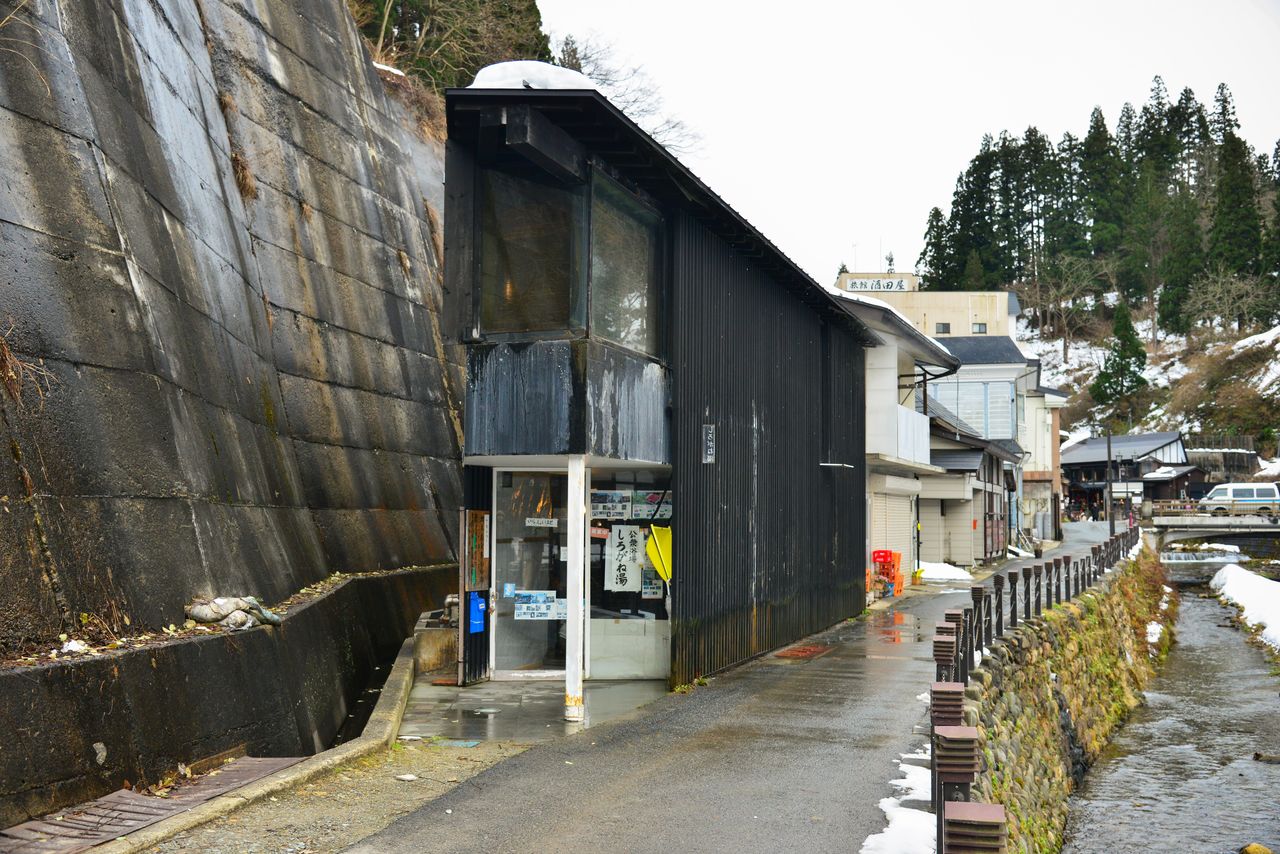
Shirogane-yu sits on a narrow strip of land. (© Shoe Press)
A short walk across the Shirogane Bridge at the entrance of the hot spring is the bath Shirogane-yu, which boasts a distinctive modern blackboard grid façade. Designed by famed architect Kuma Kengo, its unique appearance blends with the old-fashioned atmosphere of the resort area. The baths, like the building that houses them, are triangular in shape. Visitors to Shirogane-yu can enjoy a refreshing dip in hot sulfurous waters while admiring the work of a modern architecture master.
Information
- Address: 433 Ginzanshinhata, Obanazawa, Yamagata Prefecture
- Phone: 0237-28-3933 (Ginzan Hot Springs Tourism Center)
- Open hours: 8:00 am – 4:30 pm (visitors may remain until 5:00 pm)
- Open year-round (may close temporarily without notice due to winter weather)
- Admission: ¥500
Additional Information
Nogawa Tōfu
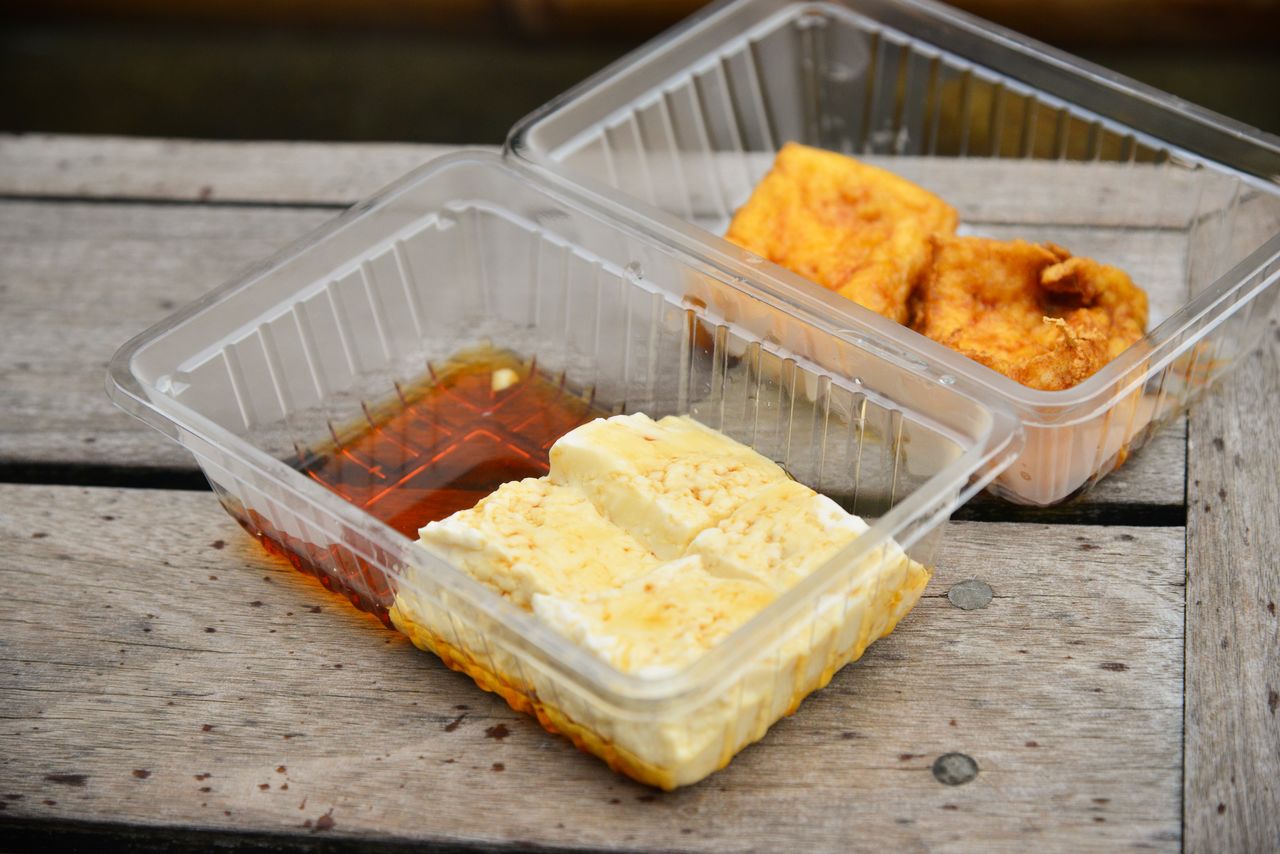
Dishes of tōfu (front) and fried tōfu (© Shoe Press)
The Nogawa tōfu shop has been serving its famed dish to visitors at Ginzan Hot Springs for a century. Nogawa serves tōfu in a variety of forms, including slightly seasoned with sweet soy sauce and deep fried. Portion are perfect for eating while strolling or soaking tired feet in footbaths around the town.
Information
- Address: 427 Ginzanshinhata, Obanazawa, Yamagata Prefecture
- Phone: 0237-28-2494
- Hours: 7:00 am to whenever they sell out
- Closed irregularly
(Originally published in Japanese. Reported and written by Shoe Press. Banner photo: Ginzan Hot Springs in winter by gaslight. Photo courtesy Obanazawa Chamber of Commerce.)